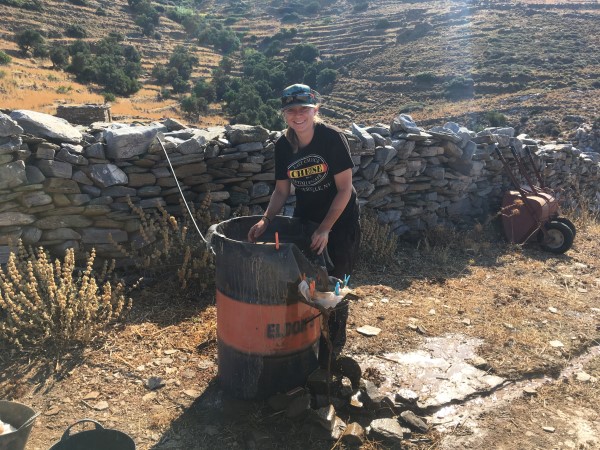Charlotte Diffey has recently completed a Doctor of Philosophy at Oxford University on the nature of Bronze Age agriculture in large cities. She studied how ancient cities were provisioned in a sustainable way which allowed growth. The two primary sites Charlotte studied were Hattusa, the Hittite capital in central Anatolia, and Tell Brak in northern Syria. Hattusa is a Late Bronze Age site and while Tell Brak was occupied over multiple periods, Charlotte’s work focused on the Early Dynastic 3b period.

The sites are extremely different; they were occupied by different societies in different periods. However, Charlotte found similarities between both sites’ agricultural practices, which the cities’ inhabitants tailored very specifically to match their surrounding environment.
Hattusa contains the largest archaeobotanical find in the world. A 119-metre-long underground storage silo, roughly 30 to 40 metres wide, was discovered at the site. It was half burnt down during the Hittite period. When full it is estimated to have contained approximately 7 million kilograms of grain which could potentially feed approximately 30,000 people for a year.
Archaeological work at Tell Brak uncovered a large administrative building potentially used for the mass production of bread for workers. Again, this was full when destroyed and contained a large amount of grain in various stages of processing.
Charlotte concluded that both of these sites were engaged in large-scale, extensive arable agriculture, but while Hittite farmers chose to grow cereals under a range of conditions (variable amounts of water and manure, etc.), farmers at Tell Brak chose to match certain species of cereals with more favourable growing conditions, whilst using more resistant species for the cultivation of more marginal arable areas. Both cities were therefore able to overcome their challenging environmental and social differences.
Charlotte has previously worked as an archaeobotanist on Çatalhöyük in Turkey, at Knossos, Naxos and Keros in Greece, and at Bestansur in Iraq. At Zagora she was responsible for wet-sieving samples of soil excavated in this year’s trenches in order to extract the archaeobotanical remains, which will then be studied and analysed in order to provide information about the diet and agricultural practices of the settlement’s inhabitants.

